TW Review by Emily Toth
From Classics to “Dummies”: The Rage for Nonfiction
I grew up believing that The Great American Novel should be a writer’s goal. The novel was the queen, the form that mattered. I wrote my first when I was nine. Thirty years later, I actually published one. Just one.
I hope the world’s not waiting for a sequel to my Daughters of New Orleans. I hope my fans have gone on with their lives.
That’s because nonfiction—biographies, advice columns, food writing—has turned out to be where I’ve found my voice. I like to dig around in other people’s dirt and ask impertinent questions. In nonfiction, you can expose, hector, pontificate, chortle—and get published doing it.
You can also find out how to do it in up-to-the-minute books. Now newbies will find help in The Complete Idiot’s Guide to Writing Nonfiction and Memoir Writing for Dummies. More seasoned authors can turn to Good Prose: The Art of Nonfiction, Blueprint Your Bestseller, and a new revision of Sin and Syntax: How to Craft Wicked Good Prose.
It’s a wicked good horde. They all offer classic suggestions for the writer’s craft: Show, don’t tell. Write about what you know. Shun adverbs. Some have the thrill of celebrity gossip. Some give me the names for techniques I’ve used and admired.
And some are, well, a little weird.
Fiction has always told us “what”—but nonfiction is more apt to ask, “Why?” That may be why we like it in these confusing, angry, narcissistic times. “WTF?” is a nonfiction question, and you can ask it about anything. You don’t have to have a splattered airplane, a dead body, or a zombie. You can write about cancer or cooking, baseball or bats. It’s never wrong to include cat pictures.
Nonfiction is also especially congenial to Baby Boomers. Many are retirees with a yen to look back and ponder what it all means. Their heroes used to be snoops like Bob Woodward and Carl Bernstein of Watergate fame. New Journalism was their special form, with its snarky dialogue and irreverence.
Boomers still don’t want to be the little old lady or the old fart, and they write memoirs to confess or get revenge or look cool to their grandkids. Maybe young Jayden will brag to his seventh grade classmates, “My grandma got wasted at Woodstock.” Maybe his little cronies will google Grandma and tweet each other—while Grandma’s tapping away at her tell-all blog. She’s part of the fastest-growing tribe of nonfiction writers: bloggers who want to tell their stories, and tell them now.
Everyone’s a potential opinion maker, but you do have to write something that people will want to read. I learned how from—where else?—books.
Start Flying with Bird by Bird
The best writing guides are the ones with sparks, the ones that inspire. Consider William Blundell’s 1988 The Art and Craft of Feature Writing, his evocation of the Wall Street Journal’s once-legendary approach to nonfiction stories. He’s got curiosity, energy, and an eye for the peculiar and outlandish in real-life characters.
Blundell gives us the volcanic mayor who explodes, “Don’t get the impression I’m a madman!” Or the poor farmer who whacks a foraging rat with a broomstick, proclaiming, “One less mouth to feed.” Or the old-school gentleman who, long before Facebook, said to a one-time ally: “Ah have reevaluated our friendship and Ah now find that you are an acquaintance.”
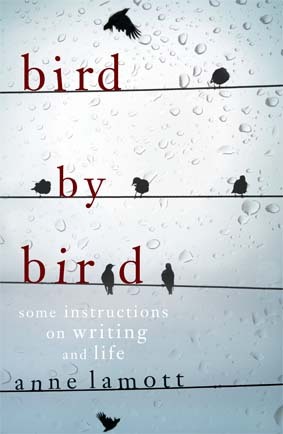
But even when great quotes fall into your notebook, it’s lonely and scary sitting down to “commit an act of literature,” as William Zinsser calls it in his 1976 book On Writing Well.
I call it the terror of the blank screen. You want to write something profound and great on the first try, but mostly you’re whimpering.
That’s when I turn to Bird by Bird, Anne Lamott’s 1994 classic. She’s been there, sniveling at the computer, but she’s found the answer: "The only way I can get anything written at all is to write really, really shitty first drafts."
That shitty first draft will free your mind, and Bird by Bird helps me flap my wings and get somewhere. It’s a book of encouragement. Lamott writes about herself with an easy, conversational charm, without any poor-me self-consciousness. She confesses a lot of things that others hide, including uncharitable feelings about people she’s supposed to admire (an ex-president has a brain “like vegetable puree”). She asks writerly questions—how do you know you’re done?—and she gives me permission to write about what I really think.
Then, once I’ve dumped out my shitty first draft, I’ve got to find the diamonds hidden in the dross. That’s when I grab On Writing Well. Zinsser’s chapter on “Clutter” (“like fighting weeds…new varieties sprout overnight”) is the best guide I’ve ever read to getting rid of unneeded words that slow the pace and gag the reader.
He culls out the laborious ones (“experiencing”) and the silly euphemisms. “A negative cash-flow position” means you’re broke.
On Writing Well is about developing your own style and how hard and invigorating it is to learn to “be yourself” on the page. Zinsser encourages me to hear my own voice—and not the voice of, say, a smarmy bureaucrat.
Like Lamott, he gives permission: "Writing is an act of ego, and you might as well admit it. Use its energy to keep yourself going."
You can also rev yourself up with a cause.
That Old-Time Journalism
Boomers like me grew up reading nonfiction for consciousness raising, exposes, and guffaws. Betty Friedan’s 1963 groundbreaker The Feminine Mystique told me why my witty, savvy mother hated being “just a housewife.” Susan Brownmiller’s 1976 book Against Our Will showed us that rape is a crime of violence, not sexual passion. In my own first book from the mid-seventies, The Curse: a Cultural History of Menstruation, I broke taboos, joked about the unmentionable, and created the Menstrual Hall of Fame (“famous menstruators in history!”).
As early as 1960, A. J. Liebling was writing in the New Yorker that “Freedom of the press is guaranteed only to those who own one.” Since anyone with a computer can now publish, we all own the press. You could call the rage for nonfiction a sign of democracy in action.
But before I crow, “Power to the people!,” I have to note that the standard presses, the places where our writing could appear, are going under. My town, Baton Rouge, has one of the few independently owned daily newspapers in the country. Every week, more national magazines go bankrupt.
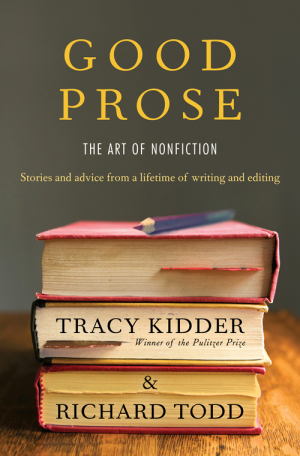 The old world is rapidly changing, as Tracy Kidder and Richard Todd show in their 2013 book Good Prose, a unique story about their forty-year working relationship. Kidder is the prizewinning author of nonfiction books like The Soul of a New Machine, Among Schoolchildren, and Mountains Beyond Mountains. Todd has been his indefatigable editor since they first met at the Atlantic in the 1970s, when women were secretaries and men had three-hour martini lunches.
The old world is rapidly changing, as Tracy Kidder and Richard Todd show in their 2013 book Good Prose, a unique story about their forty-year working relationship. Kidder is the prizewinning author of nonfiction books like The Soul of a New Machine, Among Schoolchildren, and Mountains Beyond Mountains. Todd has been his indefatigable editor since they first met at the Atlantic in the 1970s, when women were secretaries and men had three-hour martini lunches.
In Good Prose, they write in alternating voices about types of nonfiction (narratives, memoirs, essays), about fact checking, about “journalese” and “institutionalese.” They describe how they start a book: Kidder writes a first draft, very fast. He gives parts to Todd, who says, “That’s fine. Keep going.”
That’s their way of bulling through the terror of the blank screen—yes, producing a shitty first draft.
They have big questions for writers, such as “Should you start loud or soft?” (Do you open your book with a big splashy scene or sneak up on the reader? They vote for soft and sneaky.) As for “What’s a memoir really about?,” Kidder says every memoir worth reading could be called “The Education of the Author.”
Todd is his colleague, mentor, and friend who demands a lot, saying characteristically: “We need a brilliance here” or “How are we supposed to feel about this?”
No writer I know has ever received that kind of attention. For my eleven published books, I’ve had some fourteen editors. Especially in big trade publishing, they’re constantly changing jobs.
Kidder and Todd’s book is full of good advice, but it also makes me melancholy. It’s about a vanished world where the content of books really mattered, when it wasn’t just fodder for (as Todd complains) “branding” and “platforms” and “elevator pitches.”
There’s very little money now for the long-form projects Kidder’s written all his life (he’s a Boomer). Unless you’re a well-paid academic or independently wealthy, it’s almost impossible to spend three or more full years researching. You have to be dedicated, and you have to scramble, and you have to write fast.
You can find yourself wondering if you’re a serious writer. Sometimes, as an online columnist, I’ve been referred to as “a content provider.”
Deep in my writer’s soul, I cringe.
Is There a Secret Handshake?
Some people believe there’s a secret formula to writing a bestseller—or that anyone can do it. Romance novelist Lynn Emery and I once spoke to a group of aspiring authors who wanted us to tell them “the secret” of getting a book published. They would not believe there was no secret. We offered, jokingly, to teach them the secret handshake. They liked that.
And then there are the real people who think they do have “the secret.”
One of the oddest of the new writing guides is Blueprint Your Bestseller by Stuart Horwitz, inventor of what he calls the “Book Architecture Method.” Horwitz’s book mostly consists of diagrams and klutzy instructions (“Scenes are how dramatic information is received”). His formulas don’t allow for originality (“Every book has 99 scenes”), and his sentences have no flair. He doesn’t seem to know about writing snappers, those end-of-paragraph zingers that make prose move and sing.
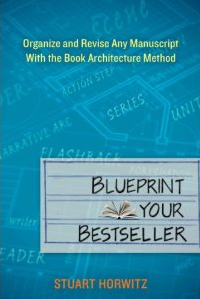 Blueprint seems well intentioned. But it’s rather like reading the engineer’s version of Moby-Dick’s opening sentence: “First of all, it is required that you call me Ishmael, as that is the name I wish to use in this context, and perhaps others as well, as may be noted later.”
Blueprint seems well intentioned. But it’s rather like reading the engineer’s version of Moby-Dick’s opening sentence: “First of all, it is required that you call me Ishmael, as that is the name I wish to use in this context, and perhaps others as well, as may be noted later.”
When I was a tyke, I would read anything, including cereal boxes. Now I want some flavor, not sawdust.
Two other writing guides are more entertaining, if a little weird as a couple: Constance Hale’s revised Sin and Syntax and Robert Hartwell Fiske’s Dictionary of Unendurable English (also updated recently since its original publication in 2004). If proper Victorians really did put books by male and female authors on separate shelves, so they wouldn’t misbehave overnight, it’d be fun to put these two side by side—and watch them fight.
The word syntax makes me think of sin tax. When I first started learning language terms, it and diction were my faves. (An ear for smut never fails you.) Hale is wildly upbeat, bordering on baroque: colorful verbs are “accomplices in action,” while other parts of speech “dress in adjective-drag.”
She’s fun as an irreverent collector of “trash” talk, like Donald Trump’s eloquence about Governor Christine Todd Whitman: “I was totally a good friend to her, and she showed totally no loyalty.”
Fiske is grumpier, a collector and denouncer of verbal infelicities that he publishes in tidy alphabetical order. Two political candidates “aren’t taking anything for granite”; a woman’s health problems are “exasperated” by pregnancy; an official refuses to believe that his colleagues might be “trepidacious” about the weather.
Hale will give you some get-up-and-go; Fiske will help you snarl about the decline of Western civilization. But neither one’s exactly an encourager, especially if you’re fairly new to the business of writing nonfiction. You’ll get a much larger vision in two books that elitist snobs would shun.
Food for Thought—and the Idiots Among Us
They have bright, jazzy covers, and they’re obviously put out by mass-market content providers—and The Complete Idiot’s Guide to Writing Nonfiction and Memoir Writing for Dummies are very, very good. Their formats are reader-friendly, with icons and drawings. They’re hybrid forms of nonfiction—written texts dotted with pointers and typographical tricks to keep multitaskers alert.
There’s no clutter in these two. You don’t have to be a widely read know-it-all to dive in. For The Compete Idiot’s Guide, author Christina Boufis even gives a short survey of literary nonfiction (like me, she was a would-be novelist, and then a Ph.D. in literature).
She includes the common tips: Be incessantly curious; write the way real people talk. Read your writing aloud; “write your own six-word memoir.” Start a story with ‘My mother never…,” and write for two pages without putting your pen down.
Boufis knows all about immersion journalism (she teaches in a prison) and about the fast, shitty first draft (she says no one but your editor will know just how bad it is). The Complete Idiot’s Guide is comprehensive and richly detailed, and I swim happily in her enthusiasm for interviewing, creating scenes, and writing sentences that “sing.” She breaks everything into understandable parts, including how to build a writing community to nurture your work.
Memoir Writing for Dummies by Ryan G. Van Cleave is also fast-paced, with a lot of knowledge distilled in an unpretentious way. Van Cleave anticipates the would-be memoirist’s self-doubts (what if my family hates me?), and emphasizes the writer’s craft (pacing, dialogue) rather than the fame or notoriety of the subject.
Celebrity memoirs often fail, he says, because they are “stinkers.” It’s much better to use yourself as a resource. For instance, he suggests, write down the six most important things that ever happened in your life.
Van Cleave provides a lot of cheerful lists and exercises and tips, including ways to end your memoir: Your “I” wins, loses, is damaged but knows better, goes “off into the sunset,” or—this is my favorite—“Big dance number.” (I’m trying to imagine it: You’re dying horribly, a scorned genius, nauseous and twisted in your garret, and then—BIG DANCE NUMBER!)
It’s the writing that matters, and these authors stress shaping, not spilling everything you’ve found, read, or wondered about. James Michener used to write bestsellers like Chesapeake with thirty pages of research on geese. That won’t sell now.
But Will Anyone Show Me the Money?
The Idiot and Dummies books are easy reads, well paced and engaging. The authors are pros, freelancers who expect to be paid for their work. They also give advice about self-publishing. For a few hundred dollars, you can put your own book up on Amazon or other online sites. But you also have to do everything else that a publisher does, from cover design to copyediting to advertising to promotional appearances.
As these and other newer guides emphasize, doing-it-yourself seems to work for some very energetic genre fiction writers (romances, vampires). But there’s no built-in, paying audience for nonfiction.
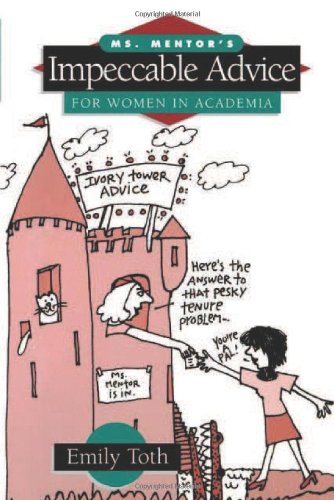 Will your grandkids buy your memoir? Can you sell space on your blog? (Some writers do.) Can you write a column—such as my “Ms. Mentor” advice column for the online Chronicle of Higher Education—and get someone to pay you for it?
Will your grandkids buy your memoir? Can you sell space on your blog? (Some writers do.) Can you write a column—such as my “Ms. Mentor” advice column for the online Chronicle of Higher Education—and get someone to pay you for it?
“No man but a blockhead ever wrote except for money,” said Dr. Samuel Johnson, and it’s something to ponder. Few nonfiction writers make a living at their craft. Even those on the bestseller lists usually have other day jobs—they’re lawyers, evangelists, taxi drivers.
In the days of Woodward and Bernstein, young people flocked to journalism schools, hoping for fame and fortune. That major (renamed Mass Communication at many universities) is now mostly dead as a professional path. But there will always be people who write because they’re fanatics, obsessives, mad lovers of words, and seekers after hidden truths.
There’s a joy in telling real-life stories and figuring out the best way to tell them. There’s a different kind of intellectual challenge. You’re not marrying hero and heroine, but often you’re marrying ideas, particularly the sublime and the ridiculous.
Susan Cheever’s 2006 book American Bloomsbury, for instance, marries lofty Transcendental ideals to the earthy reality of Henry David Thoreau’s paddling about the pond or Nathaniel Hawthorne’s fuming because Margaret Fuller flirted with another guy.
Ralph Waldo Emerson wrote about the Over-Soul, but he also talked to his umbrella. I like knowing that.
Do You Care What Others Think?
As a novelist, I knew what would happen to my five protagonists in Daughters of New Orleans, which takes place during the Civil War. From the shitty first draft onward, I knew that one would go North, one would go West, and one would die, probably in childbirth.
Nonfiction is more surprising, and it feeds my curiosity. Did women of the past ever kill during PMS? (Yes, Lizzie Borden did, and got away with murder.) Was Kate Chopin, who wrote about adultery, totally dedicated to the memory of her late husband—or did she get it on with someone else’s husband? (She misbehaved.) What happened to Grace Metalious, author of Peyton Place, the dirty book of my youth? (Alas, she drank herself to death.)
I also used to wonder how I could write about the world I know—university teaching and learning. How could I blow the whistle and reveal sordid truths that would help women? That’s when I created “Ms. Mentor,” a haughty advice columnist who’s been answering letters and sharing academic secrets since the 1990s. Ms. Mentor has published two books and over 150 monthly columns.
Nonfiction can get you plaudits. Publishers Weekly has praised Ms. Mentor as a “crusty doyenne.” The Times Higher Education Supplement lauded Ms. Mentor’s “cheeky answers, delivered with perfect look-down-her-nose-and-smirk sarcasm,” and Professor Elaine Showalter cheered, “The divine Ms. M. is back!”
But publishing nonfiction can also make you the target of rather rude eruptions. According to Jonathan Yardley, reviewing my 1990 Kate Chopin biography in the Washington Post, Emily Toth is “an academic mole, gnawing on the corpus of Kate Chopin.”
You’ve got to have strong molars, a thick skin, and an ability to laugh at colorful phrases, even if they’re aimed at your head. As a nonfiction writer, I haven’t been a blockhead: I even sold my Inside Peyton Place to Hollywood. Maybe one of these days the buyer, Sandra Bullock, will make the movie, and I’ll be famous.
Or infamous. In the world of nonfiction, either one is fine.
Nonfiction Writing Guides in This Review
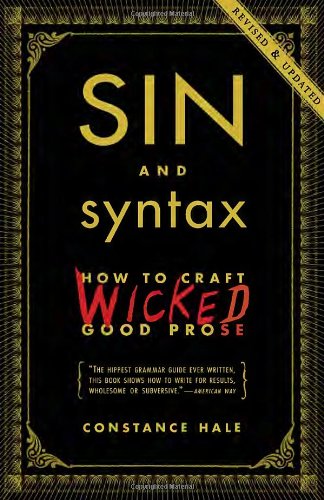
- The Complete Idiot’s Guide to Writing Nonfiction by Christina Boufis (Alpha Books, 2012).
- Memoir Writing for Dummies by Ryan G. Van Cleave (John Wiley & Sons Canada, 2013).
- Good Prose: The Art of Nonfiction by Tracy Kidder and Richard Todd (Random House, 2013).
- Blueprint Your Bestseller by Stuart Horwitz (Perigee/Penguin, 2013).
- Sin and Syntax: How to Craft Wicked Good Prose by Constance Hale, originally published in 1999 (Three Rivers Press, 2013, revised edition).
- The Art and Craft of Feature Writing: Based on The Wall Street Journal Guide by William E. Blundell (Plume/Penguin, 1988).
- Bird by Bird: Some Instructions on Writing and Life by Anne Lamott (Pantheon, 1994).
- On Writing Well: The Classic Guide to Writing Nonfiction by William Zinsser, originally published in 1976 (HarperCollins, 2006, 30th anniversary edition).
- Robert Hartwell Fiske’s Dictionary of Unendurable English: A Compendium of Mistakes in Grammar, Usage, and Spelling with Commentary on Lexicographers and Linguists by Robert Hartwell Fiske, originally published as The Dictionary of Disagreeable English in 2004 (Simon & Schuster, 2011).
A. J. Liebling’s quote is from his “Do You Belong in Journalism?” New Yorker, May 14, 1960.
 Emily Toth is a regular columnist for Talking Writing and the online Chronicle of Higher Education. She lives and writes in Louisiana.
Emily Toth is a regular columnist for Talking Writing and the online Chronicle of Higher Education. She lives and writes in Louisiana.
